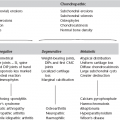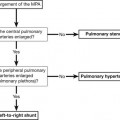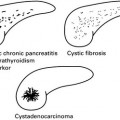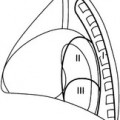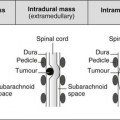13 Gynaecological imaging 1. Occurs in elderly women, mainly sixth/seventh decade. 2. Diagnosed clinically and confirmed on biopsy. 3. Staging according to FIGO classification. 4. Assessment of nodal disease is important prognostic factor. 5. Tumour best seen on T2W scans and is of intermediate to high signal. 6. Early and en plaque disease may be difficult to recognize on MRI. 1. Not normally primarily imaged by US. 2. Best assessed clinically and staged by MRI. 3. FIGO staging used for clinical and surgical assessment. 4. Combined assessment with radiological findings influences prognosis and treatment decisions. 5. Specific MRI imaging – T2 scans axial to cervix, T2 sagittal to cervix and uterus. 6. MRI features – stage IA tumour may not be visible. Tumour normally hyperintense compared to myometrium and cervical stroma on T2 scans. (a) Very common, usually benign, smooth-muscle tumour. (b) > 20% of women over 35. More common in Afro-Caribbean women. (c) Often asymptomatic and incidental finding on US. (d) Present with menstrual disturbance, pelvic mass, pelvic heaviness, increased frequency, infertility, recurrent abortion. (e) May be single or multiple, large or small. (f) Defined by size and position – submucosal, myometrial or subserosal. (g) May be extrauterine, e.g. broad ligament fibroid. (h) Usually well-defined, heterogeneous but mainly hypoechoic pattern on US. (i) Variable pattern seen in cystic degeneration. (j) Check for involvement of adjacent structures, e.g. endometrium, ureters. (k) MRI used for assessment pre-embolization and for follow-up. (l) MRI also used for problem solving with indeterminate masses. (m) Well-defined, isointense to myometrium on T1 scans. (o) Become more heterogeneous on T2 as degeneration occurs. (p) Haemorrhagic degeneration (red degeneration) shows high signal areas on T1 imaging. (a) Defined as endometrial stroma and glands within myometrium. (b) May be focal (adenomyoma) or diffuse. (c) Presents later in menstrual life with pain, dyspareunia and dysfunctional bleeding. (d) May be difficult to diagnose but can be effectively managed with a progesterone-impregnated intrauterine system. (e) US shows increased focal reflectivity in the myometrium with asymmetric thickening of the myometrium. May show a focal adenomyoma. (f) MRI is highly accurate, sensitive and specific. (g) T2W scans show punctuate foci of high signal within the myometrium. (h) Associated feature but less specific is thickening of the junctional zone > 12 mm. 3. Congenital uterine anomalies. (a) Thought to arise from pre-existing fibroid, usually but not exclusively postmenopausal. (b) Lacks any specific features on US or MRI; impossible to accurately differentiate on imaging between benign fibroid and sarcoma. (c) Large tumour size, ill-defined margins and rapid increase in size are all worrying features. 1. Normal endometrium varies across the menstrual cycle with most prominent thickening in the secretory phase. 2. Postmenopausal endometrium should be thin (< 4 mm) and homogeneous. 3. Endometrial hyperplasia can occur pre- and postmenopausally due to prolonged oestrogen exposure. 4. Endometrial polyps may be difficult to differentiate from endometrial thickening. Accuracy improved by performing sonohysterography. Power Doppler evaluation may demonstrate a stalk with a large entering vessel. 5. Endometrial thickening may be due to multiple processes: 6. Sometimes difficult to differentiate between an endometrial polyp and a submucosal fibroid. MRI useful as polyps show significant and persistent increased signal. 1. Commonest presentation is postmenopausal vaginal bleeding. 2. Endometrial carcinoma is the commonest gynaecological carcinoma. (d) Family history of endometrial/colorectal carcinoma. (e) Past history of unopposed oestrogen exposure. 4. US useful for identifying endometrial thickening in symptomatic women but not good at staging. 5. MRI is the modality of choice to stage endometrial carcinoma diagnosed on sampling/hysteroscopy. 6. Combined staging performed according to the FIGO definition. 7. High-resolution scanning required using T2 sequences in the axial, sagittal and coronal planes, with a specific sequence axial to the plane of the uterus to assess the endometrium/myometrial junctional zone. 8. The depth of the myometrial invasion is critical to staging and subsequent surgical management. 9. Postgadolinium T1W sequences are sometimes useful to define the depth of myometrial invasion. 10. Staging more problematic in the presence of fibroids or adenomyosis. 11. Tumour appears slightly hypointense compared to endometrium but hyperintense compared to myometrium. 1. US is very sensitive at diagnosing ovarian lesions but is less specific at differentiating pathology. 2. Functional ovarian cysts are extremely common. Cysts < 3 cm are considered normal follicular cysts. 3. Most cysts are relatively asymptomatic until they become space occupying, although torsion, haemorrhage and rupture may be very painful. 4. Haemorrhage into a cyst alters the appearance and sometimes makes it difficult to exclude a more sinister lesion. 5. Simple cystic lesions in the pelvis: (c) Theca lutein cyst (hydatidiform mole, etc.). (e) Corpus luteal cyst (may be slightly echogenic due to blood). (f) Dermoid cysts may rarely be purely cystic. (g) Other cystic lesions, e.g. lymphocoele, bladder diverticulum, urinoma, loculated fluid.
Gynaecology and obstetrics
13.2 Vulval carcinoma
13.3 Uterine cervix
13.4 Uterine myometrium
Clinical and imaging features of benign disease
Clinical and imaging features of malignant disease
13.5 Uterine endometrium
Clinical and imaging features of benign disease
Clinical and imaging features of malignant disease
13.6 Ovary
Clinical and imaging features of benign ovarian disease
![]()
Stay updated, free articles. Join our Telegram channel

Full access? Get Clinical Tree



